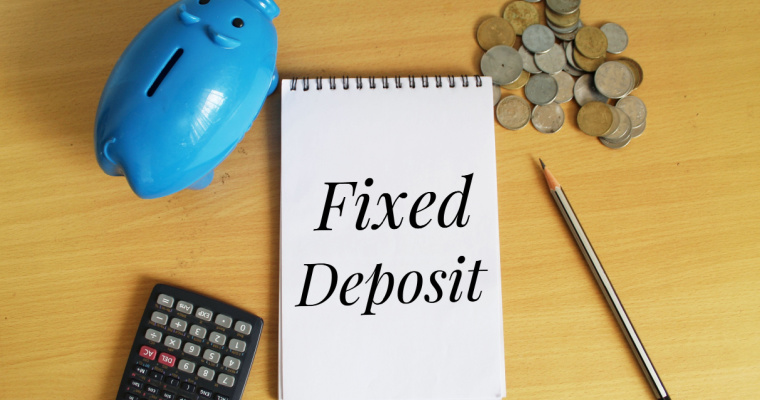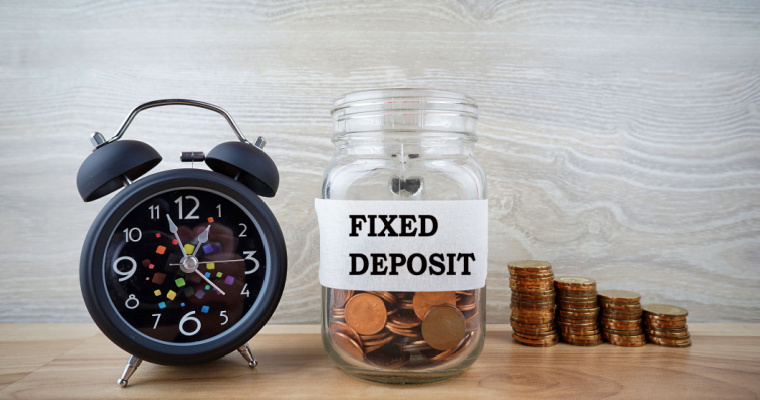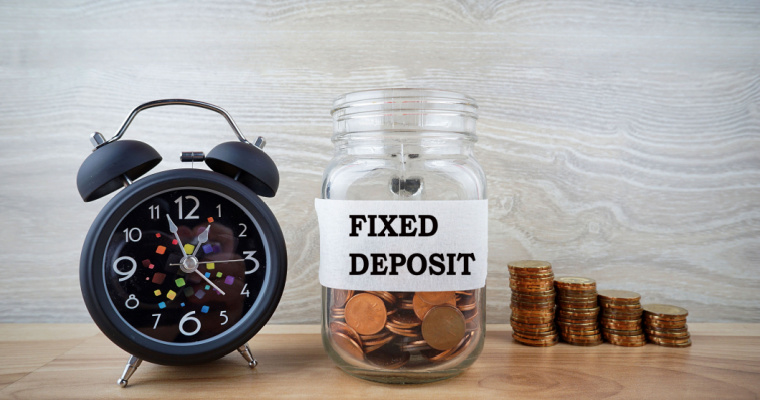Latest Central Bank of India FD Interest Rates April 2023

Central Bank of India FD interest rates currently range from 4% to 6.75% for the general public, while for senior citizens, it varies from 4.5% to 7.2-5%. The government-run bank offers an additional 0.5% interest rate to senior citizens over the standard rates for time deposits and tax-saver schemes. Meanwhile, super senior citizens and ex-employees can get a 1% additional FD interest rate from the CBI.
The maturity period of FD investments varies from 7 days to 10 years for the general public.
Apart from regular FDs, the Central Bank of India also offers FD schemes like the Special Term Deposit (callable and non-callable), Cent Garima Deposit Scheme, Cent Green Deposit Scheme and Cent Suraksha Deposits. This bank also offers term deposits to non-resident Indians (NRIs) including the Cent FCNR (B) Premium Plus Deposit Scheme and FCNR (B) Deposit Scheme.
Central Bank of India FD Interest Rates 2023 Highlights
| Interest Rate | 4% – 6.75% |
| Tenure | 7 days – 10 years |
| Minimum Deposit | ₹100 to ₹1 lakh (depending on the scheme) |
| Maximum Deposit | ₹1.5 lakh or no upper limit (depending on the scheme) |
| Lock-in Period | 5 years (For Cent Tax Saving Deposit) |
How to Calculate Central Bank of India FD Interest Rate?
Generally, there are two types of interest rates – simple interest and compound interest. Banks may use any of these rates, depending on the type, amount and tenure of the deposit scheme.
1. Simple Interest
Simple interest is earned at a pre-decided rate on the deposit amount (principal) over the tenure of investment.
Simple Interest Formula
The formula for calculating simple interest is as follows:
SI = (P x R x T) / 100
Where,
- SI = simple interest
- P = principal
- R = annual rate of interest and
- T = Time (in years)
Simple Interest Calculation
Suppose you have invested ₹1.5 lakh in a Central Bank of India FD with an interest rate of 6% per annum for 3 years. Using the above formula, the simple interest rate will be:
SI = ₹(1,50,000 x 6 x 3) / 100 = ₹27,000
Here, you will get ₹27,000 as interest after 3 years.
2. Compound Interest
Another way of calculating the FD interest rate is the compound interest method. Here, the interest you accumulate on your deposit earns interest over time. As your money stays invested, it keeps multiplying over time, which grows your investment exponentially. The more frequently the interest compounds in a year, the larger its interest.
Compound Interest Formula
To calculate compound interest, the following formula is used:
A = P x (1 + R / N) ^N x T
Where,
- A = amount upon maturity
- R = rate of interest (decimals)
- N = number of times interest gets compounded and
- T = number of years of investment
Compound Interest Calculation
In this example, you invest ₹1.5 lakh in a CBI FD with an interest rate of 6% that compounds quarterly. If you stay invested for 3 years like, in the previous example, the compound interest will be:
A = ₹ {1,50,000 x (1 + 0.06 / 4) ^ 4 x 3} = ₹1,79,342.72
Therefore, Compound Interest Amount = 1,79,342.72 – 1,50,000= ₹29,342.72
Hence, you will get ₹29,343 as compound interest. This is ₹2,343 higher than the simple interest of the same deposit amount, tenure and interest rate.
Factors that Affect Central Bank of India Fixed Deposit Rate
The following is a list of factors that can affect the fixed deposit rate of the Central Bank of India.
1. Repo Rate Fluctuations
The repo rate is the interest rate at which the Reserve Bank of India (RBI) lends money to commercial banks in the country. When the RBI increases the repo rate, banks have to pay more and they pass on the cost to their customers. As a result, the interest rates of fixed deposits go up.
2. Supply and Demand of Money
Supply and demand conditions of cash in the economy also affect FD interest rates. When the economy is growing rapidly, the demand for money increases which in turn increases the interest rate. On the other hand, companies tend to avoid loans when the economy is in decline. This leads to a fall in demand for money, which decreases interest rates.
3. Economic Conditions
A country’s economic conditions have a strong effect on market interest rates. An increase in the government’s fiscal deficit or inflation in the economy increases interest rates. Interest rate and foreign exchange rate changes in other countries can also affect interest rates in India. Similarly, the central bank’s monetary and fiscal policies are tools that it uses to control interest rates.
4. FD Duration
Fixed deposit interest rates can vary greatly depending on the tenure chosen when investing. For example, the Central Bank of India FD rate for 90 days is 4.5% per annum while for a tenure of 1 year, it is 6.75% p.a. In general, banks tend to offer higher interest for longer investment duration.
5. Auto-Renewals
Some banks offer higher interest if you opt for auto-renewals. This also provides the benefit of renewing your FD account without your input.
6. Depositor’s Age
Senior citizens, i.e., those above the age of 60 are offered higher interest rates than regular depositors. Some banks offer higher interest rates for super senior citizens, i.e., individuals above the age of 80. For example, the Central Bank of India’s interest rate for senior citizens is 1% p.a higher than standard depositors.
Central Bank of India FD Interest Rate for General Public
The Central Bank of India offers different rates of interest for different investment tenures, deposit amounts and age groups. For the general population, i.e., those below the age of 60, there are two different rates – one for deposits below ₹2 crore and another for deposits of ₹2 crore to ₹10 crore. Now, let us check the Central Bank of India FD rates in 2023:
| Maturity Period | Interest on Deposits Below ₹2 Crore | Interest on Deposits Above ₹2 Crore |
| 7 – 14 days | 4% | 5% |
| 15 – 30 days | 4.25% | 5% |
| 31 – 45 days | 4.25% | 5.5% |
| 46 – 59 days | 4.5% | 5.5% |
| 60 – 90 days | 4.5% | 4.5% |
| 91 – 179 days | 5% | 5.5% |
| 180 – 270 days | 5.5% | 6% |
| 271 – 364 days | 5.5% | 6.25% |
| 1 year – 2 years | 6.75% | 6.75% |
| 2 years – 3 years | 6.5% | 6% |
| 3 years – 5 years | 6.25% | 5.5% |
| 5 years – 10 years | 6.25% | 5.5% |
Central Bank of India FD Interest Rate for Senior Citizens
An additional 0.5% interest rate over the standard rate is offered to senior citizens with Central Bank of India FD accounts. This bonus is applicable for any time deposits as well as the Tax Saver Depositors Scheme. Here is the list of Central Bank of India FD rates for senior citizens:
| Maturity Period | Interest on Deposits Below ₹2 Crore | Interest on Deposits Above ₹2 Crore |
| 7 – 14 days | 4.5% | 5.5% |
| 15 – 30 days | 4.75% | 5.5% |
| 31 – 45 days | 4.75% | 6% |
| 46 – 59 days | 5% | 6% |
| 60 – 90 days | 5% | 5% |
| 91 – 179 days | 5.5% | 6% |
| 180 – 270 days | 6% | 6.5% |
| 271 – 364 days | 6% | 6.75% |
| 1 year – 2 years | 7.25% | 7.25% |
| 2 years – 3 years | 7% | 6.5% |
| 3 years – 5 years | 6.75% | 6% |
| 5 years – 10 years | 6.75% | 6% |
Central Bank of India FD Interest Rate for NRIs
Customer service for NRIs (Non-Resident Indians) is one of the prime verticals of the Central Bank of India. As such, the bank offers a variety of savings, current and time deposits to NRIs where they can earn interest. The following is a list of fixed deposit schemes of the Central Bank of India for NRIs.
- Cent Green Deposit- NRE
- NRE Time Deposit (1 year to 10 years)
- FCNR (B) Premium Plus Deposit (1 year to 3 years)
- FCNR (B) Deposit (1 year to 5 years)
Central Bank of India NRE FD Interest Rate
An NRE (Non-Resident External) account is a bank account in India that allows an NRI to park his/her foreign earnings. In other words, NRIs can deposit money in a foreign currency (like US Dollar or Japanese Yen) in an NRE account and withdraw it in Indian Rupees.
NREs can earn up to 6.75% interest per annum from their Central Bank of India FDs. The following is an updated list of interest rates on NRE accounts.
| Maturity Period | Interest on Deposits Below ₹2 Crore | Interest on Deposits Above ₹2 Crore |
| 1 year to less than 2 years | 6.75% | 6.5% |
| 2 years to less than 3 years | 6.5% | 6% |
| 3 years to less than 5 years | 6.25% | 5.5% |
| 5 years to less than 10 years | 6.25% | 5.5% |
Central Bank of India FCNR Interest Rates
An FCNR (Foreign Currency Non-Resident) Account allows an NRI to maintain a fixed deposit in India. By opening an FCNR fixed deposit at the Central Bank of India, you can save money earned overseas in foreign currencies like USD, EUR, etc., which mitigates the risk of currency fluctuations.
NRIs can earn interest ranging from 2% p.a to 5.77% p.a from these accounts. The following is a detailed list of the latest Central Bank FCNR interest rates.
| Maturity Period | USD | EUR | CAD | GBP | AUD |
| 1 year – 2 years | 5.77% | 2% | 4.36% | 3.36% | 3.7% |
| 2 years – 3 years | 5.62% | 2.2% | 5.36% | 4.03% | 4.2% |
| 3 years – 4 years | 5.5% | 2.4% | 5.61% | 4.13% | 4.55% |
| 4 years – 5 years | 5.6% | 2.4% | 5.66% | 4.13% | 4.8% |
| 5 year deposit | 5.65% | 2.4% | 5.66% | 4.13% | 4.9% |
| Overdue deposit | 4.77% | 1% | 3.36% | 2.63 | 2.7% |
Central Bank of India vs Other Banks FD Interest Rates
This section will compare the FD interest rates of CBI against other commercial banks. For this comparison, we will consider the interest rates on FDs below ₹2 crore for both the general public and senior citizens.
| Name of the Bank | Maturity Period | Interest Rate Range |
| SBI | 7 days to 10 years | 3% to 7.5% p.a |
| Bank of Baroda | 7 days to 10 years* | 3% to 7.55% p.a |
| Union Bank of India | 7 days to 10 years | 3% to 7.8% p.a |
| Punjab National Bank | 7 days to 10 years | 3.5% to 8.05% p.a |
| Punjab and Sind Bank Fixed Deposit | 7 days to 10 years | 2.80% – 7.60% |
| Bandhan Bank | 7 days to 10 years | 3% to 8.5% p.a |
| Bank of India | 7 days to 10 years | 3% to 7.65% p.a |
| HDFC Bank | 7 days to 10 years | 3% to 7.75% p.a |
| Paytm Payments Bank | 7 days to 1 year | 2.75% to 5.5% |
| Axis Bank | 7 days to 10 years | 3.5% to 8.01% p.a |
| ICICI Bank | 7 days to 10 years | 3% to 7.6% p.a |
| DBS Bank | 7 days to 5 years and above | 2.5% to 8% |
| Yes Bank | 7 days to 10 years | 3.25% to 8.25% p.a |
| Indian Overseas Bank | 7 days to 10 years | 4.30% to 7.75% |
| Kotak Mahindra Bank | 7 days to 10 years | 2.75% to 7.7% p.a |
| IDFC FIRST Bank | 7 days to 10 years | 3.5% to 8.25% p.a |
| Yes Bank | 7 days to 10 years | 3.25% to 8.00% |
| IndusInd Bank | 7 days to 10 years | 3.5 to 8.25% p.a |
| RBL Bank | 7 days to 20 years | 3.5% to 8.3% p.a |
| IDBI Bank | 7 days to 20 years** | 3% to 7.25% p.a |
| Canara Bank | 7 days to 10 years | 4% to 7.98% p.a |
| UCO Bank | 7 days to 5+ years | 2.90% to 7.20% |
| HSBC | 7 days to 5 years | 2.85% to 8% p.a |
| Federal Bank | 7 days to 2223+ days | 3% to 7.75% p.a |
| Indian Bank | 7 days to 5 years | 2.80% to 6.70% p.a |
** For specific conditions like awards from judicial bodies, courts, etc.
This table is for educational purposes only. Navi neither endorses any of the products mentioned above nor takes responsibility for the data mentioned. Feel free to consult a financial advisor before taking any investment decision.
Features and Benefits of Central Bank of India Fixed Deposit
The following is a list of features and benefits of CBI FDs:
- The minimum deposit amount for term deposits is ₹100.
- The maturity period for these FDs ranges from 7 days to 10 years.
- The highest interest rate you can get from CBI is 7.6% p.a from the 444-day special non-callable term deposit.
- For the general public, the Cent Garima Deposit Scheme offers the highest interest rate of 7.55% p.a for a deposit period of 777 days.
- Current and ex-employees of this bank get an additional 1% interest rate on all callable schemes.
- Premature withdrawal is permitted for all term deposits other than non-callable FDs.
- Tax benefits under Section 80C are applicable only for the Cent Tax Saving Deposit.
Different Types of Central Bank of India FD Schemes
The Central Bank offers a number of FDs for both Indian residents and NRIs. The different Central Bank of India fixed deposit schemes are:
- Fixed Deposit Receipt (FDR)
- Quarterly Interest Deposit Receipt (QIDR)
- Monthly Interest Deposit Receipt (MIDR)
- Cent Garima Term Deposit Scheme
- Cent Green Time Deposit Scheme
- Cent Suraksha Deposits
- Cent Tax Saving Schemes
- Money Multiplier Deposit Certificate (MMDC)
- Cent Floating Deposit Scheme
- Cent Super Callable Time Deposit for 444 Days
- Cent Super Time Deposit 555 Days
- Cent Super 999 Days
- Cent Super Non-Callable Time Deposit for 444 Days
- Cent Non Callable 999 & 555 Days
1. Fixed Deposit Receipt (FDR)
- Minimum Deposit: ₹100
- Maximum Deposit: No Upper Limit
- Tenure: 7 days to 120 months
- Interest Rate: Simple interest credited half-yearly or on maturity
- Eligibility: Individuals, HUFs, companies and firms
2. Quarterly Interest Deposit Receipt (QIDR)
- Minimum Deposit: ₹5,000
- Maximum Deposit: No Upper Limit
- Tenure: 12 to 120 months
- Interest Rate: Prevailing rates (i.e. 4% to 7.45% p.a)
- Eligibility: Any Indian resident
3. Monthly Interest Deposit Receipt (MIDR)
- Minimum Deposit: ₹5,000
- Maximum Deposit: No Upper Limit
- Tenure: 12 to 120 months
- Interest Rate: Prevailing rate when opening the FD (i.e. 4% to 7.45% p.a)
- Eligibility: Any Indian resident
4. Cent Garima Term Deposit Scheme
- Minimum Deposit: ₹10,000
- Maximum Deposit: ₹10 crore
- Tenure: 777 days (fixed)
- Interest Rate: 7.55% p.a (extra 0.5% for senior citizens)
- Eligibility: All customers including NRIs
5. Cent Green Time Deposit Scheme
- Minimum Deposit: ₹50,000
- Maximum Deposit: ₹1,99,99,999
- Tenure: 1111 days, 2222 days and 3333 days
- Interest Rate: 5.7%, 5.8% and 5.85% p.a
- Eligibility: Any Indian resident (online)
6. Cent Suraksha Deposits
- Minimum Deposit: ₹201
- Maximum Deposit: ₹5,001
- Tenure: 5 to 10 years
- Interest Rate: Prevailing FD rates (i.e. 4% to 7.45% p.a)
- Eligibility: As per PMSBY/PMJJBY scheme
7. Cent Tax Saving Schemes
- Minimum Deposit: ₹100
- Maximum Deposit: ₹1.5 lakh in a year
- Tenure: 5 years (fixed)
- Interest Rate: Same as 5-year FD (6.25% to 6.75% p.a)
- Eligibility: Individual or HUF
8. Money Multiplier Deposit Certificate (MMDC)
- Minimum Deposit: ₹100
- Maximum Deposit: No Upper Limit
- Tenure: 6 to 120 months
- Interest Rate: Prevailing rates (i.e. 4% to 7.45% p.a)
- Eligibility: Any Indian resident
9. Cent Floating Deposit Scheme
- Minimum Deposit: ₹1 lakh
- Maximum Deposit: Less than ₹2 crore
- Tenure: 1 year to below 2 years and 2 years to below 3 years
- Interest Rate: 6.80% and 6.85% p.a
- Eligibility: All types of customers
10. Cent Super Callable Time Deposit for 444 Days
- Minimum Deposit: ₹10,000
- Maximum Deposit: ₹10 crore
- Tenure: 444 days (fixed)
- Interest Rate: 7.35% p.a
- Eligibility: Resident Indians and NRIs
11. Cent Super Time Deposit 555 Days
- Minimum Deposit: ₹10,000
- Maximum Deposit: ₹10 crore
- Tenure: 555 days (fixed)
- Interest Rate: 5.75% p.a (additional rate for senior citizens and staff)
- Eligibility: Resident Indian
12. Cent Super 999 Days
- Minimum Deposit: ₹10,000
- Maximum Deposit: ₹10 crore
- Tenure: 999 days (fixed)
- Interest Rate: 6.25% p.a (extra for Indian senior citizens and staff)
- Eligibility: Resident Indians and NRIs
13. Cent Super Non-Callable Time Deposit for 444 Days
- Minimum Deposit: ₹15 lakh
- Maximum Deposit: ₹10 crore
- Tenure: 444 days (fixed)
- Interest Rate: 7.6% p.a (extra for senior citizens and staff)
- Eligibility: Resident Indians and NRIs
14. Cent Non Callable 999 & 555 Days
- Minimum Deposit: ₹15 lakh
- Maximum Deposit: ₹10 crore
- Tenure: 555 (fixed) and 999 (fixed)
- Interest Rate: 6% and 6.5% p.a respectively
- Eligibility: Resident Indians
How to Invest in Central Bank of India Fixed Deposits?
To open an FD with the Central Bank of India, follow these steps:
- Step 1: Go to the official website of the Central Bank of India.
- Step 2: On the right-hand side, click on Internet Banking. On the next page, click on the Login button if you already have an account. Enter your user ID, and password and enter the CAPTCHA code as shown on the screen.
- Step 3: If you do not have a savings account, you can open a new one by going to a bank branch or through the official website.
- Step 4: To open a savings account online, click on ‘Open Account through Video KYC’ on the homepage. Follow the given instructions to complete the account opening.
- Step 5: Once you have the interest banking details, sign in and navigate to the ‘Online Term Deposit’ tab.
- Step 6: Select the type of FD account you wish to open and provide the necessary details.
- Step 7: Click on ‘Confirm’. Your request to open an FD account will get booked.
Documents Required to Open Central Bank of India FD
To open a fixed deposit with Central Bank of India, you will need one to provide these types of documents:
- Identification proof: Passport, Aadhaar card, PAN card, voter ID card, driving licence, government/defence-issued ID card or employer-issued ID card
- Address proof: Aadhaar card, electricity bill, ration card, salary slip, telephone bill, bank account statement or letter from a reputed employer, public authority, local body, etc.
- Date of birth proof (Only for senior citizens and minors): Voter ID card, PAN card, passport, driving licence or service discharge certificate for senior citizens. For minors, a birth certificate issued by a gram panchayat or municipal corporation
- Recently captured passport-sized photographs
Eligibility to Open Central Bank of India FD
The following are the eligibility criteria for opening an FD with Central Bank:
- Term deposit accounts can be opened by individuals, HUF (Hindu Undivided Family), societies, trusts, LLP (Limited Liability Partnership), partnership firms and private and public limited companies.
- Deposit accounts can be opened by an individual or more persons.
- Visually challenged and illiterate individuals can also open a fixed deposit account. Similarly, sick and old people can open a fixed deposit. The bank will provide any assistance possible to such an account holder.
- A minor can open a deposit account with his/her mother or natural guardian.
- Minors over 10 years of age can open and operate savings accounts and fixed deposits independently.
- An account holder must furnish Permanent Account Number (PAN) or General Index Register (GIR) Number or declaration via Form 60/Form 61.
Taxation on Central Bank of India FD Deposit Scheme
The following points highlight the taxation rules of fixed deposits in India:
- As per the Income Tax Act, 1961, the interest income from a fixed deposit is fully taxable. It falls under the ‘income from other sources’ category. Thus, the earnings from an FD get added to your gross annual income and are taxed as per your applicable tax slab rate.
- If your interest income is over ₹40,000 in a financial year, TDS (Tax Deducted at Source) is charged on the income. For senior citizens, this limit is ₹50,000 in a fiscal year.
- TDS is charged right at the time when interest is debited to your account. If you have submitted your PAN card details to the bank, TDS is deducted at a rate of 10%; otherwise, the TDS deduction is 20%.
- However, if your total income is less than the minimum taxable amount, no TDS is deducted. You will need to submit Form 15G or 15H to give instructions to the bank to not deduct any TDS.
- A tax-saving FD allows you to get deductions of up to ₹1,50,000 in a financial year under Section 80C of the Income Tax Act.
Loan Against Central Bank of India FD Scheme
Central Bank of India considers requests for loans or overdrafts against term deposits. It works just like any other secured loan and comes with a much lower interest rate than personal loans. For many people, this is a suitable alternative to liquidating their deposits. Now, let us look into the features of loans against FDs:
- You can get up to 90% of the fixed deposit amount as a loan or overdraft facility.
- The loan’s interest rate depends on the type of fixed deposit scheme and its interest rate. Suppose you take a loan against the Cent Floating Deposit Scheme. Here, the loan’s interest rate will be 1% p.a higher than the floating interest rate of the FD.
- Even if you avail a loan against an FD, it will continue to give you interest income.
- A loan against deposit can be availed for a minor. In this case, the guardian will have to submit a declaration stating that the minor needs the funds.
- The demand loan facility can be accessed online or at your nearest branch.
Final Word
The Central Bank of India offers many fixed deposit schemes with different interest rates for different tenures. The Central Bank of India FD rates are currently in the range of 4% to 7.25% p.a. You can open a CBI FD account online via its official portal. However, before you get started, you should know that premature withdrawal of deposits carries a 1% penal interest rate. For some FDs (non-callable FDs), early withdrawal is not even allowed.
FAQs
For deposits of up to ₹5 lakh, no premature withdrawal penalty is applicable. However, for larger deposits, a 1% penal interest is charged on the withdrawn amount.
If you renew the deposit for a longer period than the remaining tenure of the previous deposit, Central Bank offers a waiver on the premature withdrawal penalty. Another time the penalty gets waived is for the settlement of claims when one of the joint account holders becomes deceased.
CBI offers two non-callable FDs called the Cent Super Non-Callable Time Deposit for 444 days and Cent non-callable for 999 & 555 days. The CBI interest rates of these deposits are higher than their callable counterparts. However, premature withdrawal is not allowed for these deposits, with certain exceptions where heavy penalties are imposed.
The Central Bank of India offers a 0.5% higher interest rate to senior citizens, a 1% higher rate to super senior citizens and 1% to ex-staff. Therefore, a super senior citizen who is also an ex-staff will receive a total bonus of 2% interest rate.
Yes, you can add or delete the name of joint account holders. However, all joint account holders must provide their consent for such addition or deletion. The name of one of the original account holders must also be present.
Both of these forms are used by depositors with zero tax liability to claim exemption on TDS. Depositors under the age of 60 years must submit Form 15G while senior citizens must file Form 15H.
Disclaimer
This article is solely for educational purposes. Navi doesn't take any responsibility for the information or claims made in the blog.

Customer’s Feedback
No comments found.Latest Post Office FD Interest Rate April 2023
Post office FD interest rates are currently in the range of 6.8% to 7.5% for the quarter ending Jun... Read More »Latest South Indian Bank FD Interest Rate April 2023
The South Indian Bank FD rate varies between 2.65% and 7.55% depending on the amount deposited, the... Read More »Latest IDBI Bank FD Interest Rate April 2023
IDBI Bank FD interest rates range between 3% and 6.75% for the general public and 3.5% and 7.25% p.... Read More »Latest UCO Bank FD Interest Rate April 2023
UCO Bank FD rates range from 2.90% to 7.20% for the general public and 3.15% to 7.70% for senior ci... Read More »Latest Bandhan Bank FD Interest Rate April 2023
Bandhan Bank FD interest rates range from 3% to 8% for the general public and 3.75% to 8.50% for se... Read More »Latest YES Bank FD Interest Rate April 2023
YES Bank FD rates are currently in the range of 3.25% to 7.5% for regular investors and 3.75% to 8%... Read More »Latest Punjab National Bank FD Interest Rate April 2023
Punjab National Bank or PNB fixed deposit interest rates are currently in the range of 3.50% to 7.2... Read More »Latest IDFC First Bank FD Interest Rate April 2023
IDFC First Bank FD rates are among the most competitive in the market and currently range from 3.50... Read More »Latest Karnataka Bank FD Interest Rate April 2023
Karnataka Bank FD rates can range from 4.5% to 7.30% for the general public and 4.90% to 7.80% for ... Read More »Latest Citibank FD Interest Rate April 2023
Citibank FD rates are currently in the range of 3.50% to 7.26% for normal investors, and up to 8.01... Read More »Latest RBL Bank FD Interest Rate April 2023
Ratnakar Bank Limited (RBL) FD rates range from 3.5% to 7.8% for the general public and 4% to 8.30%... Read More »Latest HSBC Bank FD Interest Rate April 2023
HSBC FD rates range from 2.85% to 7.50% for general depositors and 3.35% to 8% for senior citizens.... Read More »Top 10 Chit Fund Schemes in India in 2023
Chit funds are one of the most popular return-generating saving schemes in India. It is a financial... Read More »10 Best Gold ETFs in India to Invest in April 2023
Gold ETFs or Gold Exchange Traded Funds are passively managed funds that track the price of physica... Read More »10 Best Demat Accounts in India for Beginners in 2023
Creation of Demat accounts revolutionised the way trades were conducted at the stock exchanges. It... Read More »20 Best Index Funds to Invest in India in April 2023
What is an Index Fund? An index fund is a type of mutual fund or exchange-traded fund (ETF) that... Read More »Best Arbitrage Mutual Funds to Invest in India in April 2023
Arbitrage funds are hybrid mutual fund schemes that aim to make low-risk profits by buying and sell... Read More »10 Best SIP Plans in India to Invest in April 2023
What is SIP? SIP or Systematic Investment Plan is a method of investing a fixed amount in ... Read More »10 Best Corporate Bond Funds in India to Invest in April 2023
Corporate bond funds are debt funds that invest at least 80% of the investment corpus in companies ... Read More »10 Best Bank for Savings Account in India [Highest Interest Rate 2023]
Savings account is a type of financial instrument offered by several banks. It lets you safely depo... Read More »






























